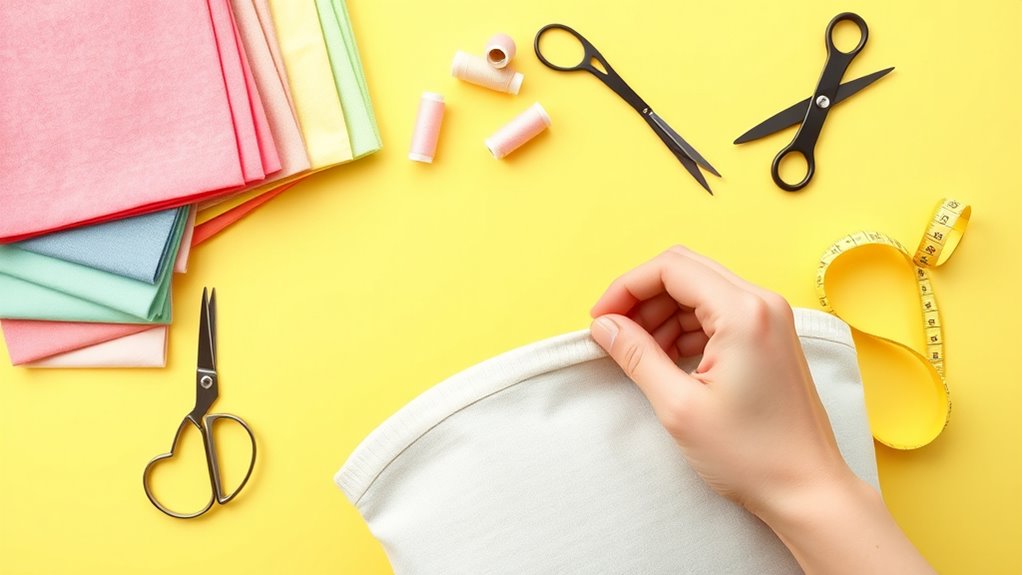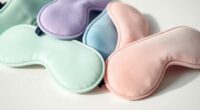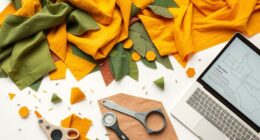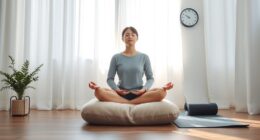Start with simple projects like pillowcases or tote bags that you’ll actually use every day. These projects help you build confidence, learn basic techniques, and practice seam allowances and finishing skills. Use medium-weight fabrics like cotton or linen to keep things manageable. By completing these practical items first, you lay a strong foundation for more advanced sewing. If you keep going, you’ll discover even more ways to create useful, handcrafted pieces with ease.
Key Takeaways
- Start with practical projects like pillowcases and tote bags to build skills and produce usable items.
- Use medium-weight fabrics such as cotton or linen for easier sewing and better results.
- Familiarize yourself with your sewing machine’s basic features, including stitch options and buttonhole functions.
- Practice sewing straight seams and finishing edges to ensure durability and a professional look.
- Complete simple projects regularly to boost confidence and develop foundational sewing techniques.
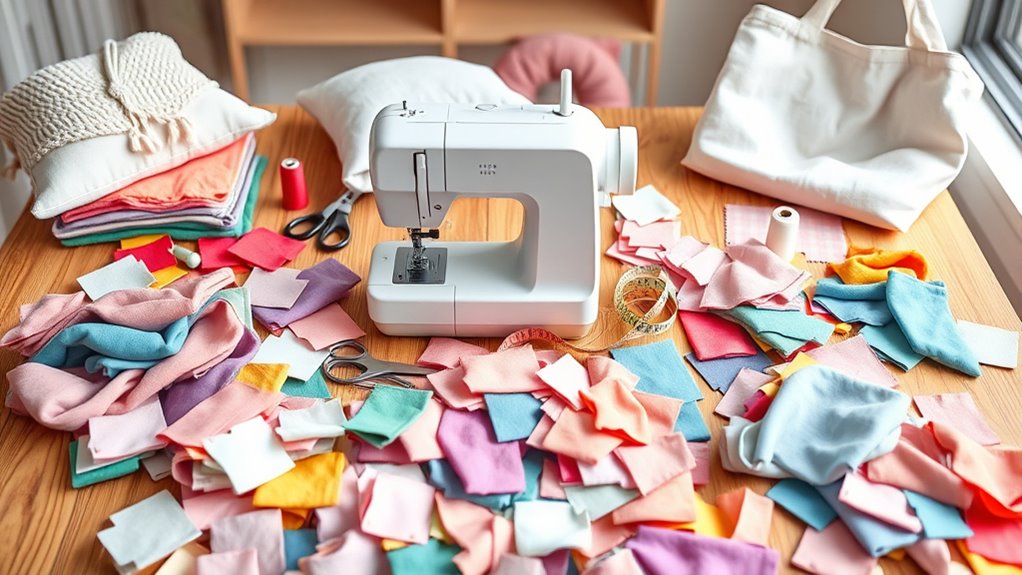
Starting with simple sewing projects is a great way to build your skills and gain confidence. When you’re just starting out, focusing on practical projects helps you stay motivated and see real results. One of the first things you’ll want to consider is fabric selection. Choosing the right fabric makes a significant difference in how your project turns out and how easy it is to work with. For beginners, it’s best to start with medium-weight, woven fabrics like cotton or linen. These fabrics are forgiving and hold their shape well, making them perfect for things like pillowcases or tote bags. Avoid slippery fabrics like silk or delicate knits initially, as they can be tricky to handle and may frustrate you early on. As you gain experience, you can experiment with different textures and weights.
Alongside fabric choice, understanding your sewing machine features is essential. Most beginner-friendly machines come with basic stitch options, but familiarizing yourself with the available features can help you execute your projects smoothly. For example, most machines have adjustable stitch length and width, which come in handy when creating seams or decorative stitches. A built-in buttonhole function simplifies making buttonholes, saving you time and effort. It’s also helpful to learn how to operate the machine’s tension settings and presser foot options, as these influence the quality of your stitches and your ability to sew different types of fabric. Taking time to read your machine’s manual and practicing on scrap fabric will make you more comfortable and confident when working on actual projects.
Once you’ve selected suitable fabric and understand your machine’s features, you can explore straightforward projects like pillow covers, simple tote bags, or fabric coasters. These projects don’t require complex techniques but give you practical items you’ll actually use around your home. As you sew, pay close attention to seam allowances and finishing techniques; these details improve the durability and professional look of your projects. Practicing consistent seam allowances and neat finishing stitches will boost your confidence and prepare you for more advanced projects down the line.
Starting with these foundational steps—selecting the right fabric, mastering your machine’s features, and choosing useful beginner projects—sets you up for success. Each project you complete will sharpen your skills, build your confidence, and make sewing an enjoyable, rewarding hobby. Remember, patience is key; every stitch you make brings you closer to becoming a skilled sewist.
Frequently Asked Questions
What Sewing Machine Features Are Essential for Beginners?
When choosing a sewing machine, focus on essential features like easy stitch selection, adjustable speed, and a simple bobbin system. These make sewing more manageable for beginners. Remember, regular sewing machine maintenance keeps it in top shape, preventing issues. Follow beginner sewing tips, such as practicing on scrap fabric and starting with basic projects, to build confidence and skills. This way, you’ll enjoy sewing and create useful projects with ease.
How Much Fabric Is Needed for Each Project?
Many believe that fabric measurements are the same for every project, but that’s not true. For small projects like pillowcases, you’ll need about 1 yard of fabric, while larger items like tote bags require around 2 yards. Always check the project size and pattern instructions to determine the exact fabric measurements needed. Planning ahead guarantees you have enough fabric, preventing last-minute trips to the store.
What Are Common Beginner Sewing Mistakes to Avoid?
When starting out, you should watch for common beginner sewing mistakes like choosing the wrong fabric selection or neglecting pattern adjustments. Avoid rushing through projects, as this can lead to uneven seams or puckering. Always double-check your measurements and pick fabrics suited for your skill level. Taking your time and making necessary pattern adjustments helps guarantee your finished project looks professional and feels satisfying to complete.
How Can I Fix Mistakes in My Sewing Projects?
Mistakes in your sewing projects are like potholes on a smooth road—easy to fix once you spot them. First, review your sewing machine maintenance to make certain it runs smoothly. Then, identify the error—perhaps uneven stitches or misaligned seams—and carefully unpick or adjust. Use fabric selection tips to prevent future mishaps. With patience and practice, you’ll turn sewing errors into lessons, making your projects stronger and more beautiful.
What Are the Best Types of Thread for Beginner Projects?
When choosing thread types for your beginner sewing projects, stick with all-purpose polyester thread. It’s versatile, strong, and easy to work with, making it perfect for a variety of sewing supplies. Avoid complicated or specialty threads until you gain more confidence. Using quality thread helps prevent breakage and tangling, ensuring smoother stitches. As you learn, you’ll discover which thread types work best for different fabrics and projects, making sewing more enjoyable and successful.
Conclusion
Now that you’ve started sewing these practical projects, you’re well on your way to creating items you’ll actually use every day. Did you know that over 60% of new sewers report feeling more confident after completing just a few beginner projects? Keep practicing, and soon you’ll be surprised at how many useful, personalized items you can craft. Sewing isn’t just fun—it’s a skill that empowers you to make your life more convenient and stylish.
